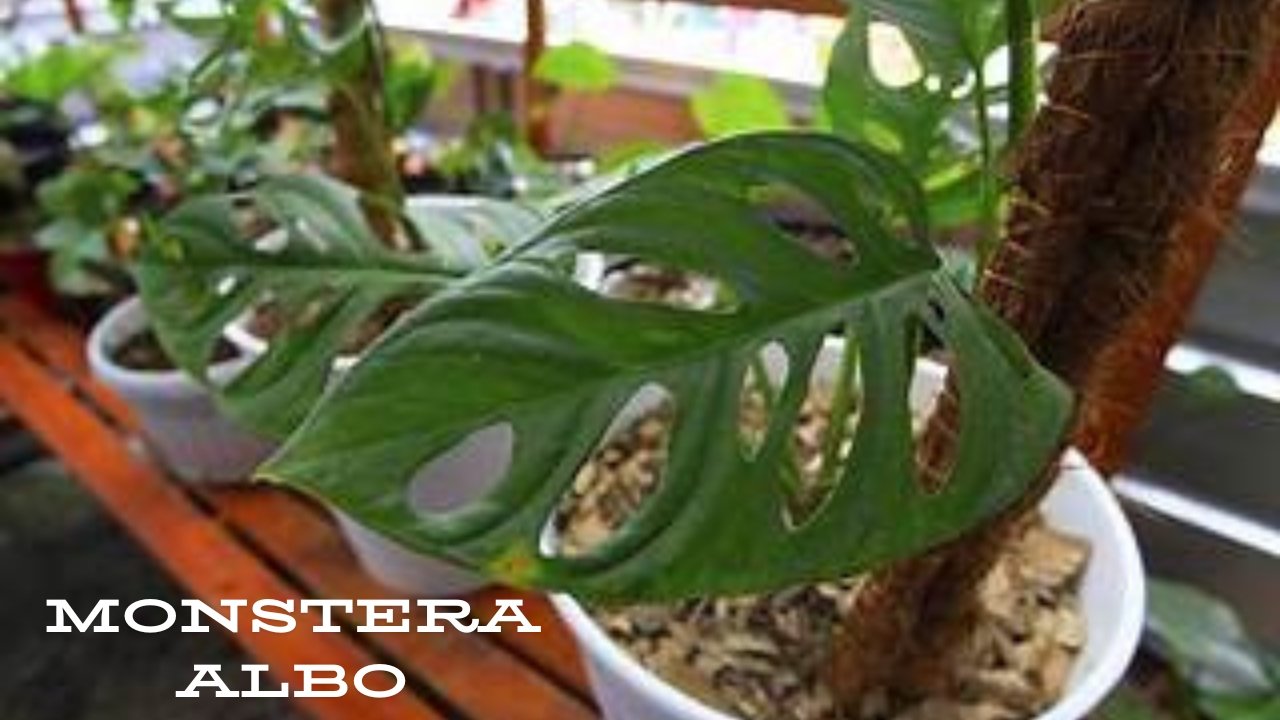Welcome to the captivating world of Monstera Albo, scientifically known as Monstera deliciosa ‘Albo Borsigiana’. This plant has captured the hearts of indoor gardeners and plant enthusiasts worldwide, thanks to its stunning variegation and unrivaled prestige. If you’re looking to add a touch of elegance to your home or garden, the Monstera Albo is an excellent choice. However, caring for this rare and beautiful plant requires some special attention, especially considering its toxic nature to pets.
In this comprehensive guide, we’ll walk you through everything you need to know about Monstera Albo from its botanical details to growing conditions, propagation methods, common issues, and pests. By the end of this article, you’ll be well-equipped to cultivate and care for this remarkable plant, ensuring it thrives in your indoor oasis.
Monstera Albo: Botanical Details
Scientific Name and Family
Monstera Albo, or Monstera deliciosa ‘Albo Borsigiana’, belongs to the family Araceae. This family is known for its many other popular houseplants, including Philodendrons, Anthuriums, and Zantedeschia (Calla Lilies).
Perennial Nature and Size
Monstera Albo is a perennial plant, meaning it lives for more than two years. When grown indoors, it can reach an impressive height of up to 10 feet, making it a striking focal point in any room. Outdoors, under ideal conditions, this plant can grow up to 30 feet tall, though it rarely reaches this height in most household environments.
Variegation
One of the most captivating features of Monstera Albo is its variegation. The leaves exhibit a unique pattern of white and green, which adds a touch of elegance and sophistication to any space. However, this variegation is not just for aesthetics; it also indicates the plant’s health and light conditions, making it an essential aspect of care.
Growing Conditions
To maintain the health and variegation of your Monstera Albo, it’s crucial to provide the right growing conditions. Below, we break down the key factors you need to consider.
Light
Monstera Albo thrives in bright, indirect light. Direct sunlight can scorch the leaves, while inadequate light can cause the plant to lose its variegation. Aim for 6-7 hours of bright, filtered light daily. If natural light is insufficient, consider using grow lights to supplement.
Soil
Well-draining soil is essential for Monstera Albo. A mix of perlite, orchid bark, coco peat, and coco coir works best. This combination ensures good aeration and drainage, preventing root rot and other common issues. You can also add some activated charcoal to keep the soil fresh and fungi-free.
Water
Watering Monstera Albo requires a delicate balance. Overwatering can lead to root rot, while underwatering can cause the leaves to wilt. Allow the top inch of soil to dry out between waterings. A good rule of thumb is to water your Monstera Albo once a week during the growing season and reduce frequency in the winter months.
Temperature and Humidity
Monstera Albo prefers a temperature range of 65-80°F. It’s also a humidity-loving plant, thriving in humidity levels of 60% or higher. If you live in a dry climate, consider using a humidifier or placing a tray of water near the plant to maintain optimal humidity levels.
Propagation
Propagating Monstera Albo can be an exciting yet challenging task. Here’s a brief overview of how to propagate this plant:
Stem Cuttings: The most common method is through stem cuttings. Choose a healthy stem with at least one node and an aerial root.
Water Propagation: Place the stem cutting in water until roots develop. Change the water every few days to keep it fresh.
Soil Propagation: Once the roots are a few inches long, transfer the cutting to a well-draining soil mix. Keep the soil moist but not waterlogged.
Tips for Successful Propagation
Use clean, sterilized tools to make your cuts.
Ensure the cutting has at least one node and preferably an aerial root.
Maintain high humidity and moderate temperatures during the rooting process.
Common Issues and Pests
No plant is without its challenges, and Monstera Albo is no exception. Below are some common issues and pests you may encounter, along with tips on how to address them.
Losing Variegation
One of the most disappointing issues is losing variegation, usually due to insufficient light. To prevent this, ensure your Monstera Albo gets bright, indirect light for at least 6-7 hours a day. If you notice the leaves turning more green than white, consider moving the plant to a brighter location.
Common Pests
Spider Mites: These tiny pests can cause significant damage by sucking the sap from the leaves. Look for fine webbing and yellow spots. Neem oil or insecticidal soap can help control spider mites.
Mealybugs: These pests appear as small, white cottony clusters on the plant. Remove them manually with a cotton swab dipped in alcohol.
Fungus Gnats: These tiny black flies thrive in moist soil. Allow the soil to dry out between waterings and use sticky traps to manage them.
Diseases
Root Rot: Overwatering can lead to root rot, characterized by yellowing leaves and mushy roots. To prevent this, ensure your soil mix is well-draining and allow the top inch of soil to dry out between waterings.
Leaf Spot: Fungal infections can cause brown or black spots on the leaves. Remove affected leaves and treat the plant with a fungicide.
Conclusion
The Monstera Albo is a truly remarkable plant that brings beauty and elegance into any space. Its stunning variegation, impressive size, and unique care requirements make it a prized possession for plant enthusiasts and indoor gardeners alike. While it does require some special attention, the rewards of successfully cultivating this plant are well worth the effort.
From understanding its botanical details to mastering its growing conditions and propagation methods, we’ve covered everything you need to know to care for your Monstera Albo. Don’t let common issues and pests discourage you; with the right knowledge and care, your Monstera Albo can thrive, adding a touch of natural beauty to your home.
FAQs
Is Monstera Albo toxic to pets?
Yes, Monstera Albo is toxic to pets. It contains calcium oxalate crystals, which can cause irritation and swelling if ingested. Keep the plant out of reach of pets to ensure their safety.
How often should I water my Monstera Albo?
Water your Monstera Albo once a week during the growing season and reduce the frequency in the winter months. Allow the top inch of soil to dry out between waterings to prevent root rot.
Can Monstera Albo grow in low light conditions?
Monstera Albo prefers bright, indirect light. While it can survive in low light conditions, it may lose its variegation. For best results, provide 6-7 hours of bright, filtered light daily.
What is the best soil mix for Monstera Albo?
A well-draining soil mix is essential for Monstera Albo. A combination of perlite, orchid bark, coco peat, and coco coir works best. You can also add activated charcoal to keep the soil fresh.
How can I propagate Monstera Albo?
Monstera Albo can be propagated through stem cuttings. Place the cutting in water until roots develop, then transfer it to a well-draining soil mix. Maintain high humidity and moderate temperatures during the rooting process.
How do I prevent pests on my Monstera Albo?
Regularly inspect your plant for pests like spider mites, mealybugs, and fungus gnats. Use neem oil or insecticidal soap for treatment. Ensure proper air circulation and avoid overwatering to prevent pest infestations.
What should I do if my Monstera Albo loses its variegation?
If your Monstera Albo is losing variegation, it may not be receiving enough light. Move the plant to a brighter location with indirect light for at least 6-7 hours a day.









